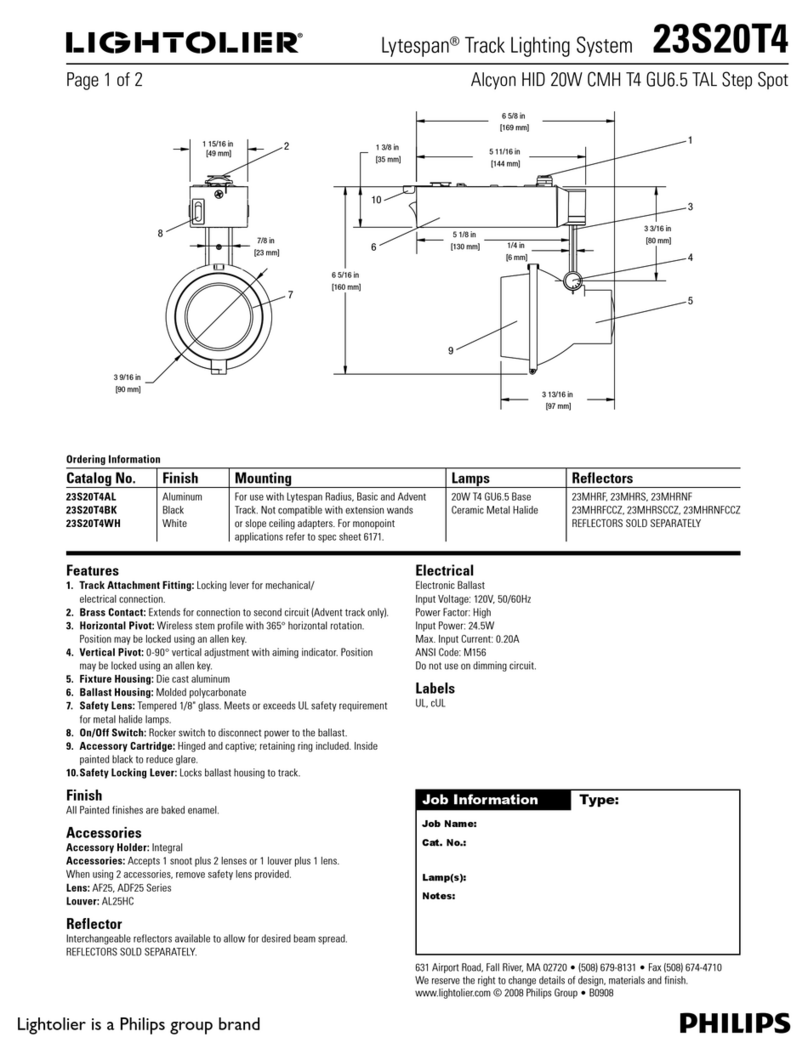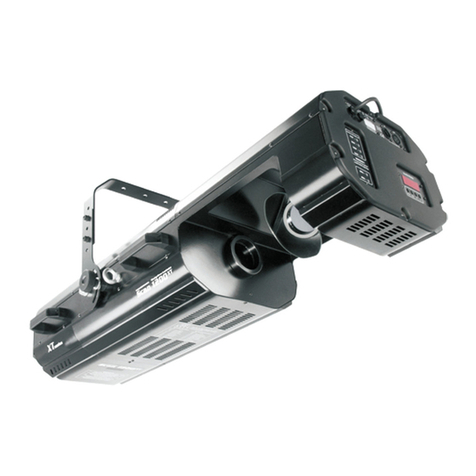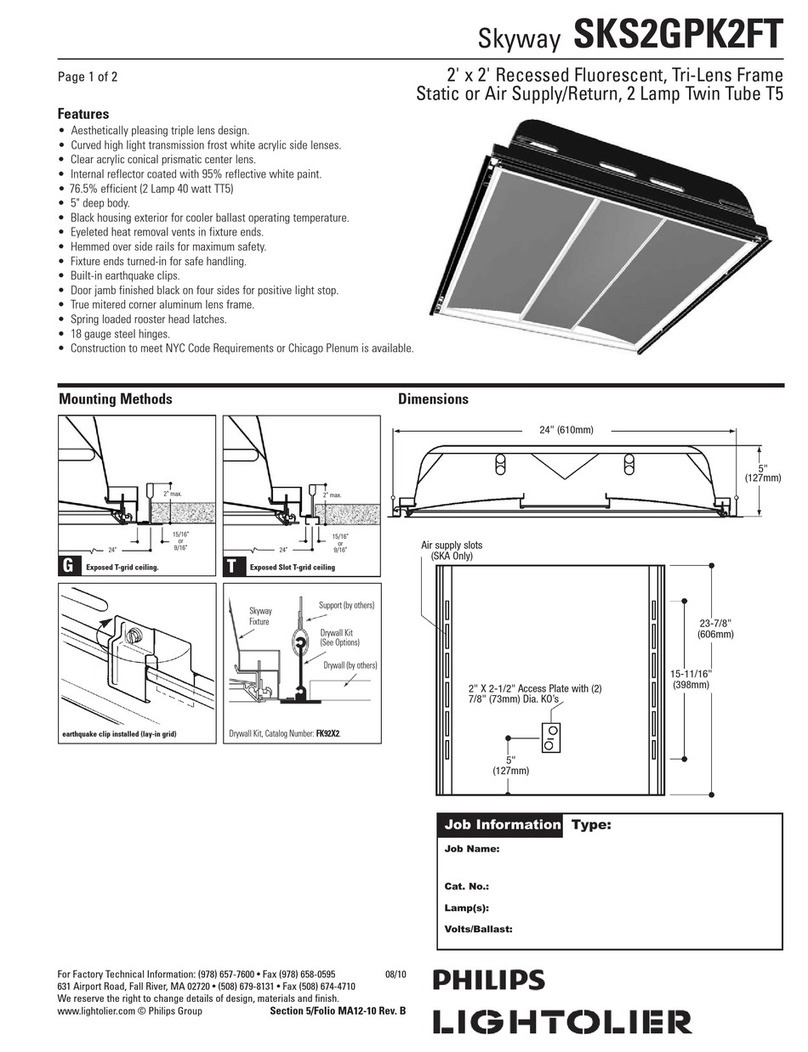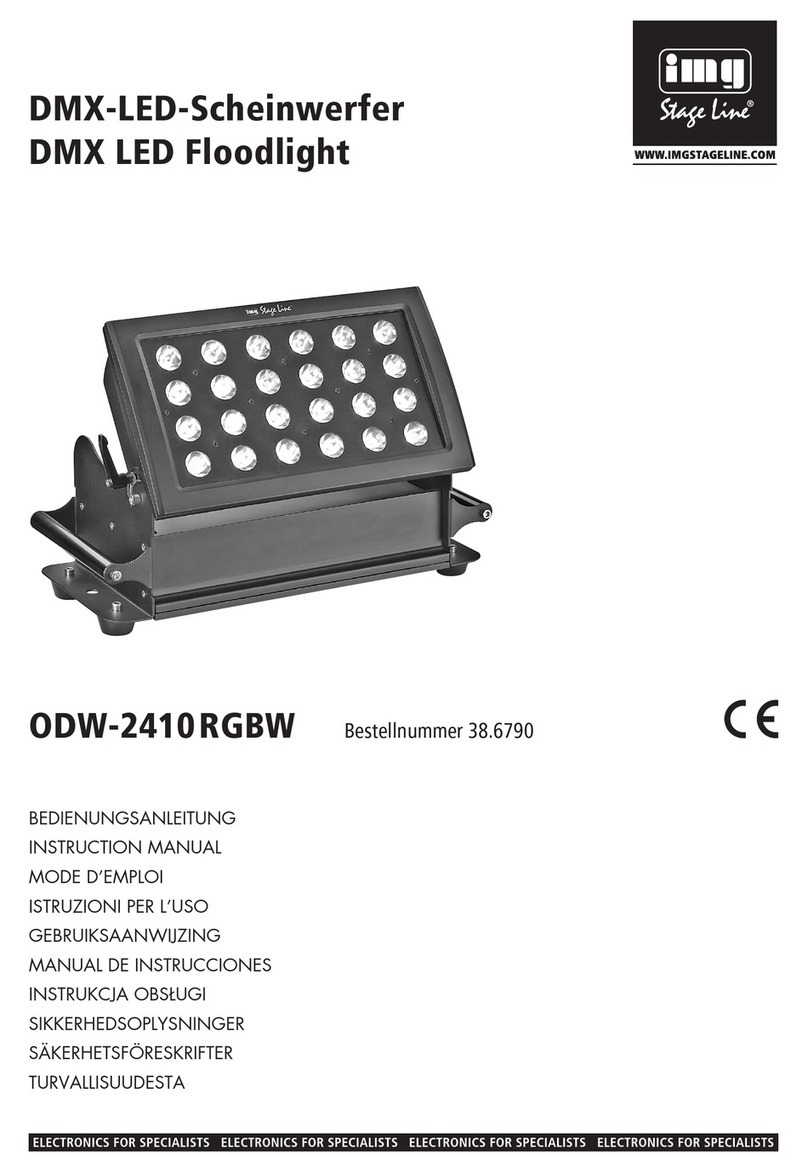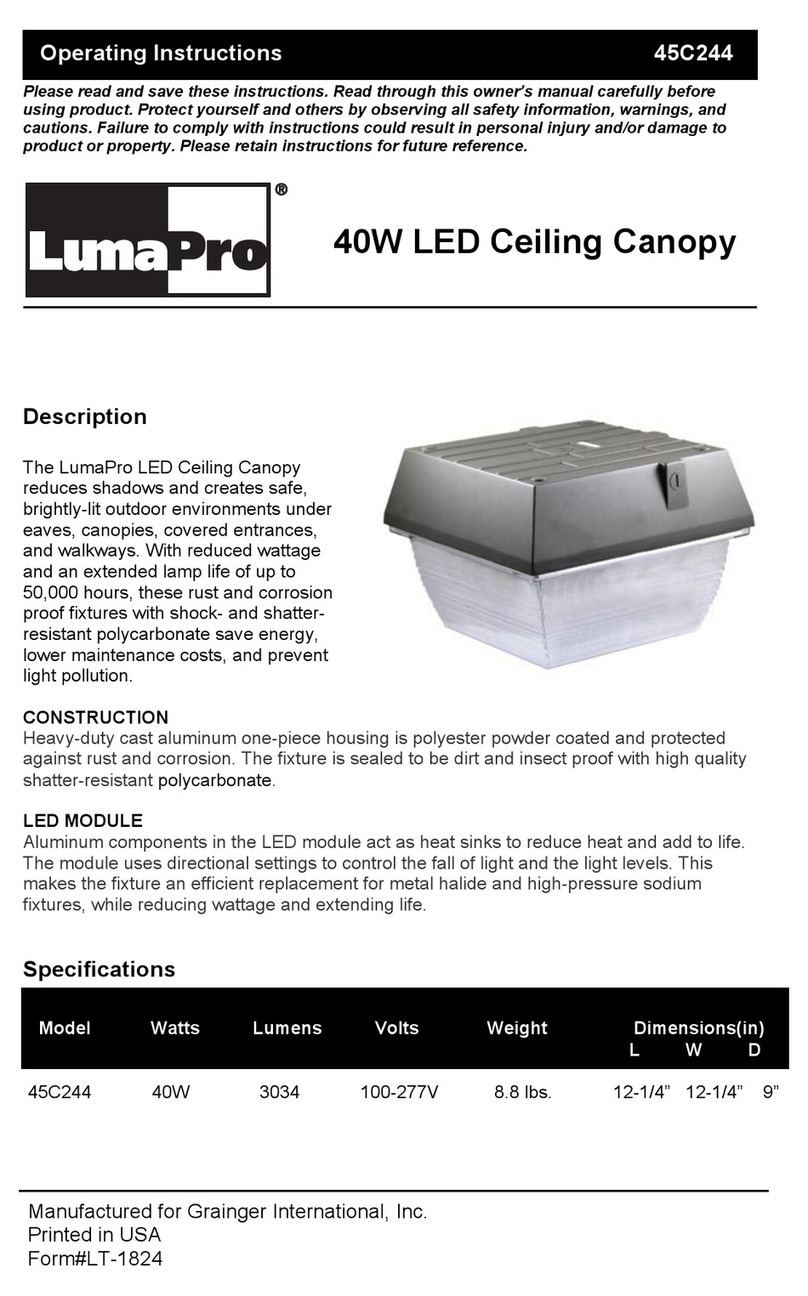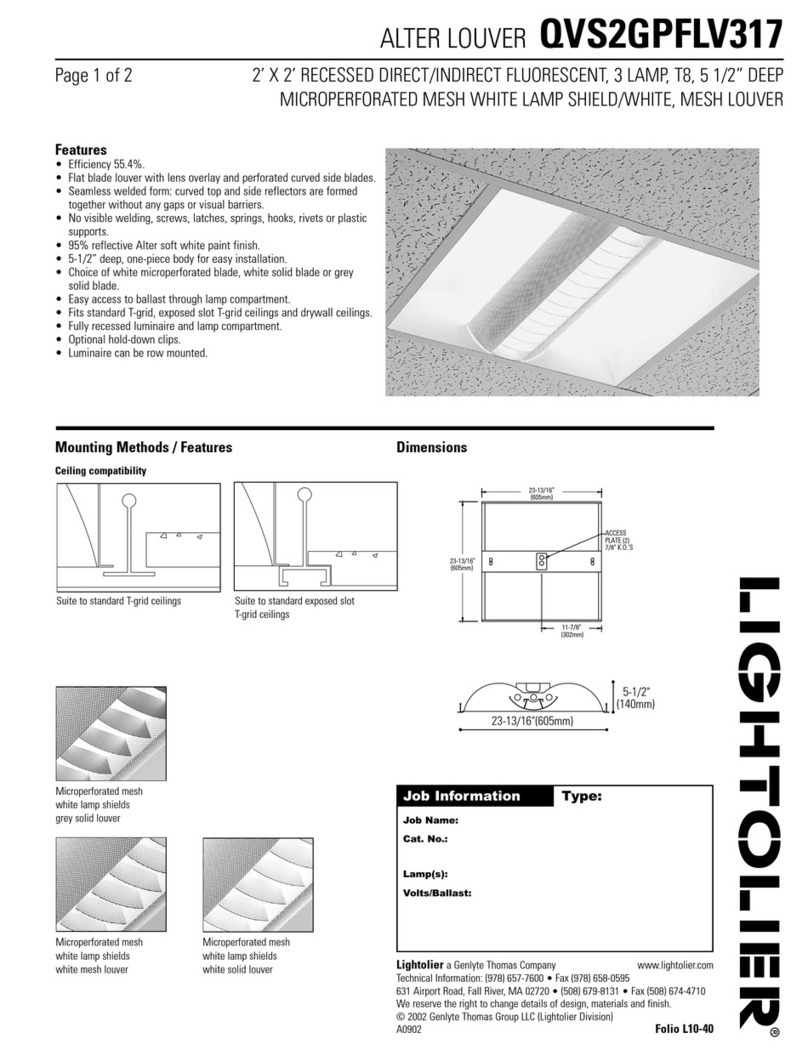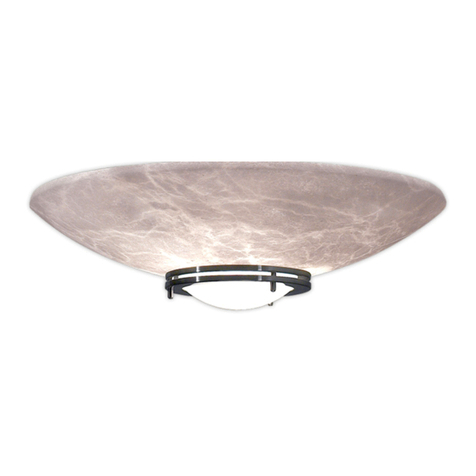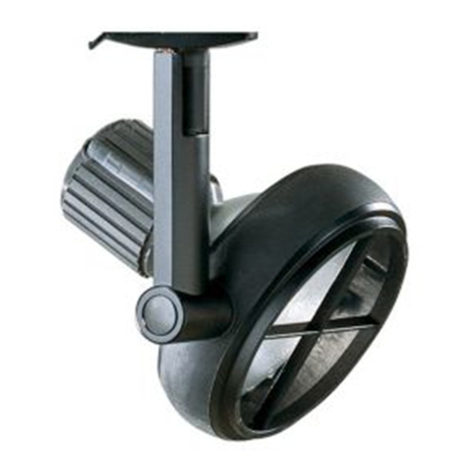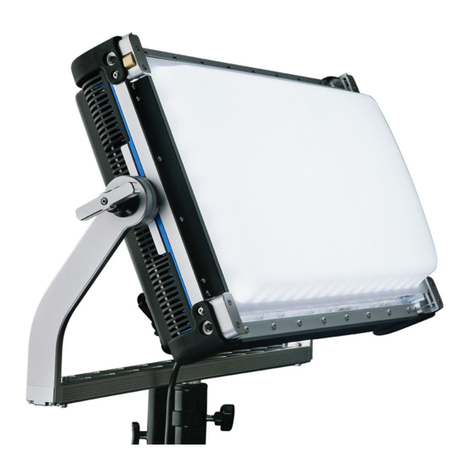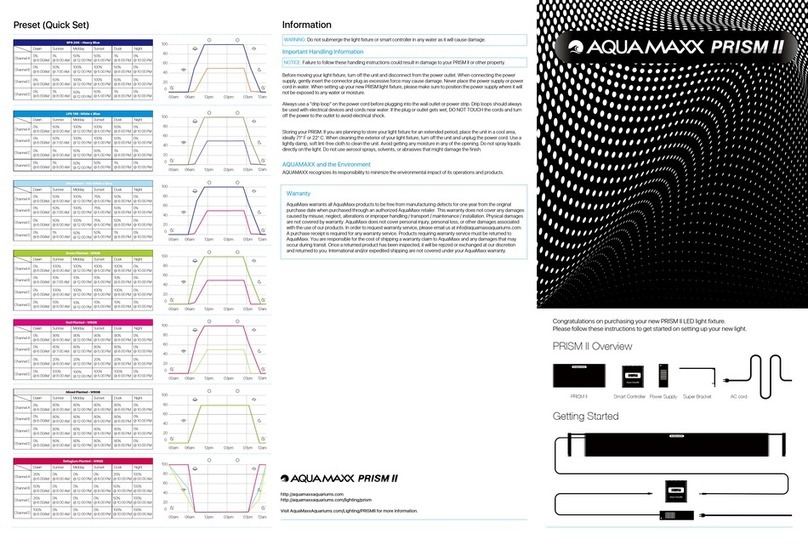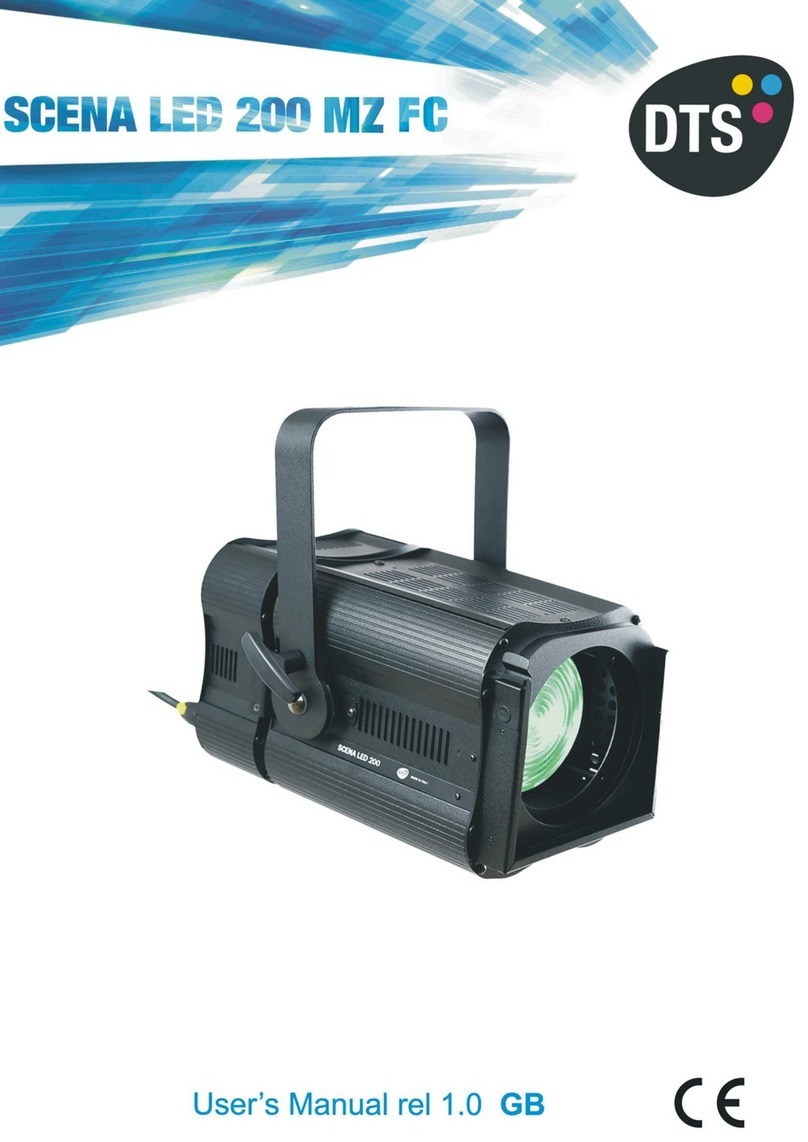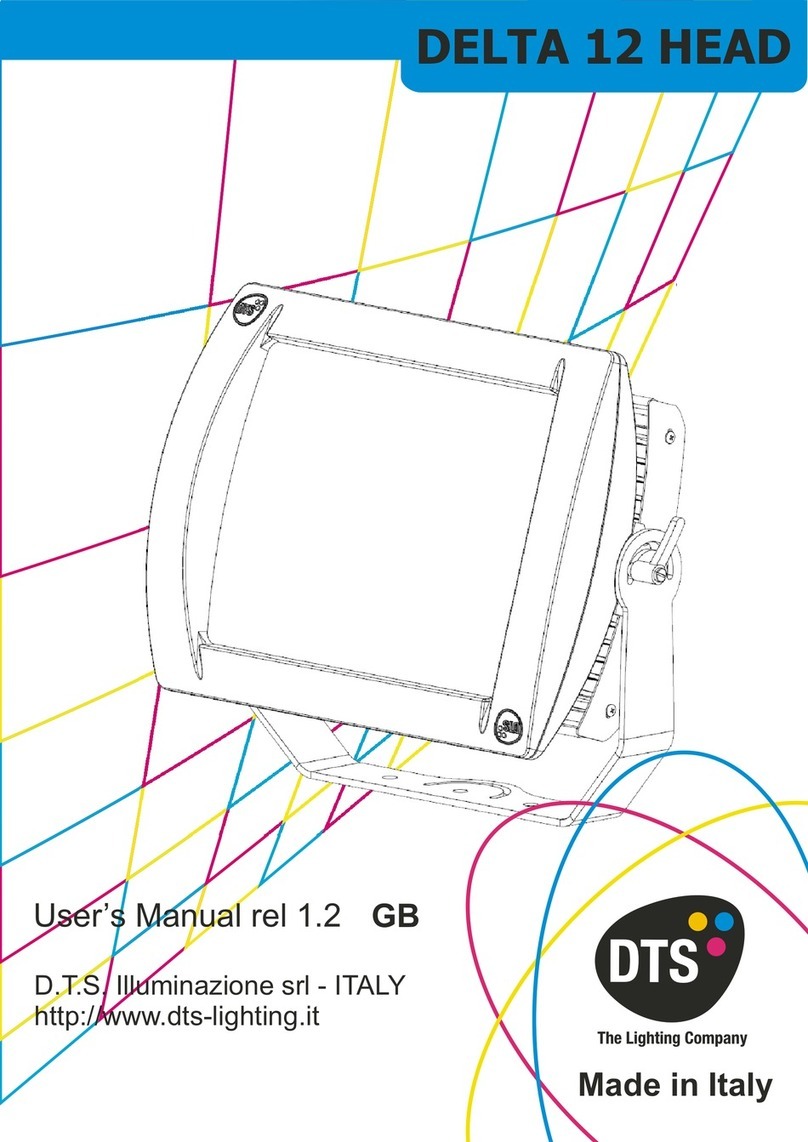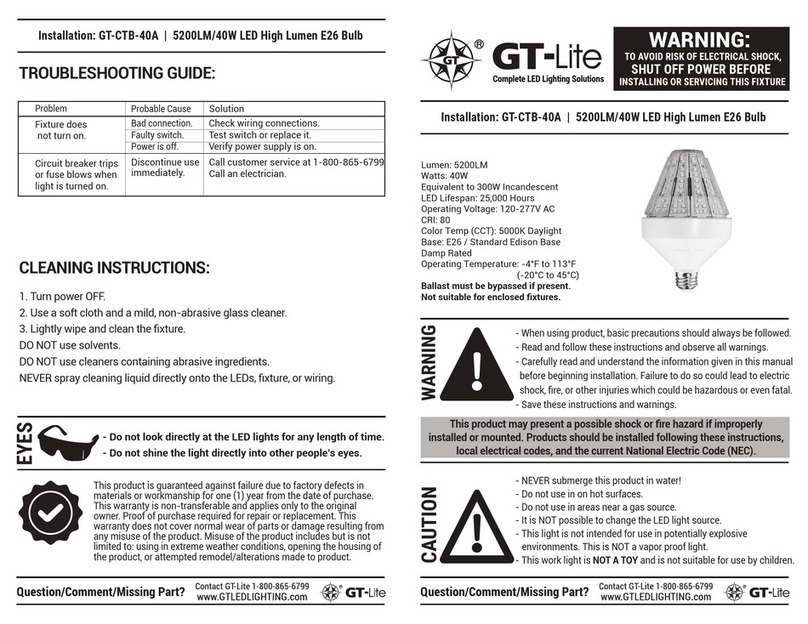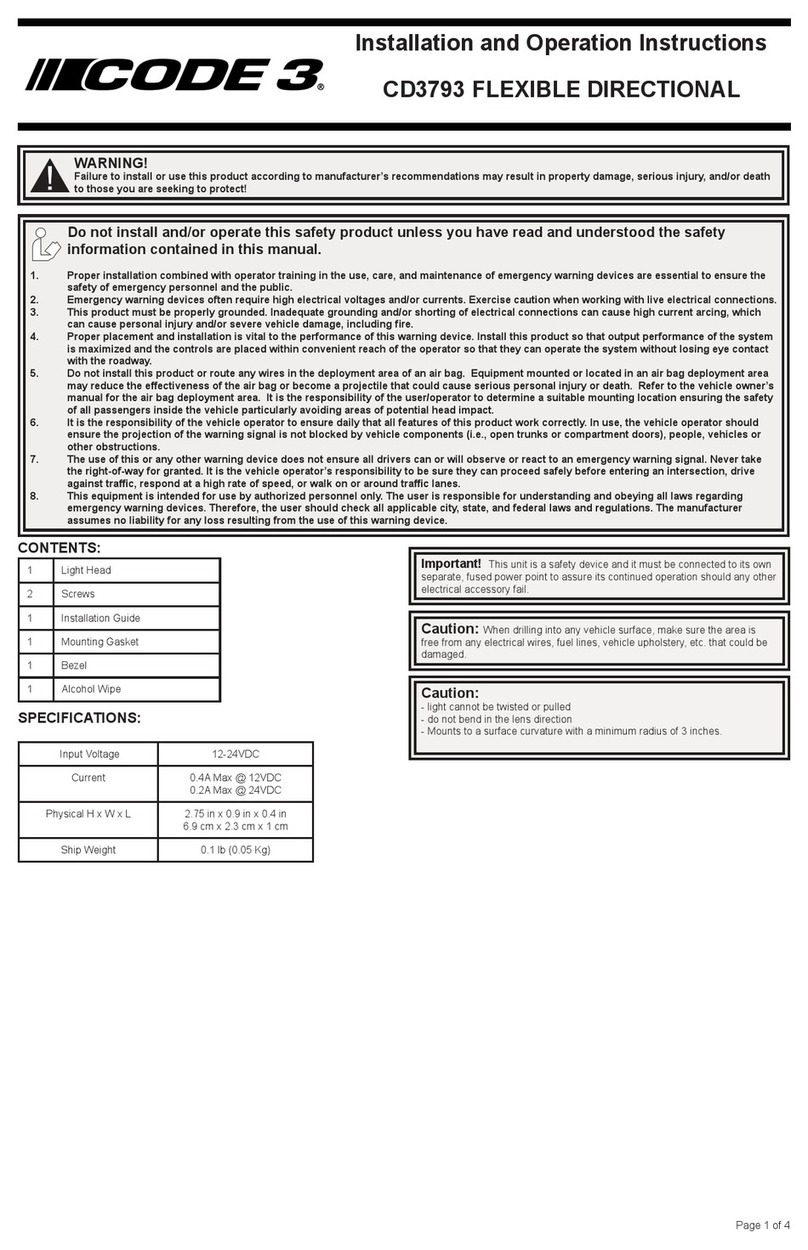Niko 1XX-90001 User manual

PM1XX-90001R15501 nv Niko sa Industriepark West 40, BE-9100 Sint-Niklaas, Belgium — tel. +32 3 778 90 00 — fax +32 3 777 71 20 — e-mail: support@niko.be — www.niko.eu NL
1XX-90001
1
Lees de volledige handleiding vóór installatie en ingebruikneming. Bewaar deze handleiding
zorgvuldig voor later gebruik.
1. BESCHRIJVING
De draadloze RGB(W)-wandbediening (zonder bedrading tussen de bedieningspunten) stuurt de
RGB(W)-controller RF (340-00120) en de RGB(W)-controller RF + wifi (340-00121) aan. Een
RGB(W)-controller kan door maximaal tien draadloze RGB(W)-wandbedieningen worden aangestuurd.
Elke RGB(W)-wandbediening kan maximaal vijf RGB(W)-controllers tegelijkertijd aansturen. In dit geval moet je
de controllers in een master-slaveopstelling plaatsen (zie hoofdstuk 4). Je sluit maximaal één master en vier
slaves op één wandbediening aan.
Het product maakt deel uit van een radiofrequentiesysteem (RF), een installatietechniek zonder bedrading
tussen de drukknoppen (bedieningspunten) en de te bedienen controller(s). De draadloze wandbediening is
gebaseerd op signaaloverdracht via radiogolven op de frequentie 868 MHz. Op deze frequentie zijn uitsluitend
producten toegelaten die niet continu uitzenden. Het draadloze systeem leent zich uitstekend voor specifieke
toepassingen zoals renovatie van geklasseerde interieurs en uitbreidingen in bestaande elektrische installaties
(waar kap- of breekwerk moeilijk of onmogelijk is).
De werking van toestellen met een IR-afstandsbediening zoals een tv of video- en audioapparatuur wordt niet
verstoord door de RGB(W)-wandbediening. De reikwijdte binnenshuis bedraagt in optimale omstandigheden
ongeveer 25 m voor de bediening van een draadloze RGB(W)-controller (340-00120) en 15 m voor een
draadloze RGB(W)-controller RF + wifi (340-00121). Het zendbereik van de RGB(W)-wandbediening is
afhankelijk van de gebruikte materialen in de woning. Figuur 1 toont het kwaliteitsverlies van het zendbereik
afhankelijk het gebruikte materiaal.
Let op: De signalen van dit draadloze apparaat kunnen verstoord worden waardoor de goede werking in
het gedrang komt. Plaats dit apparaat daarom nooit in de buurt van andere draadloze systemen en test de
werking en het bereik van de wandbediening en controller(s) op hun voorziene posities vóór plaatsing.
2. ONDERDELEN
Toets Betekenis Functie
aan/uit Je schakelt de ledverlichting in en uit.
De ledverlichting wordt opnieuw ingeschakeld op de laatste stand
voordat je ze met de wandbediening uitgeschakeld hebt.
dimmen Houd de toets ingedrukt om de ledverlichting op of neer te
dimmen.
Je keert de dimrichting om door de toets los te laten en hem
opnieuw ingedrukt te houden.
kleurenloop Druk kort op de toets om de kleurenloop te starten of stop te
zetten.
favoriet Druk lang op de toets om de huidige kleur als favoriet in het
geheugen op te slaan. De ledstrip geeft visuele feedback.
Als je kort op de toets drukt, activeer je de opgeslagen kleur.
kleurkeuze Houd de toets ingedrukt om door alle kleuren te lopen.
Als je de toets loslaat, blijft de geselecteerde kleur geactiveerd.
Om in omgekeerde richting door alle kleuren te lopen, laat je de
toets los en houd je hem opnieuw ingedrukt.
kleuren-
loopsnel-
heid
Houd de toets ingedrukt om de doorlooptijd van de kleurenloop
aan te passen (van 10 seconden tot 1 uur). Als je de toets
ingedrukt houdt, krijg je een tragere doorlooptijd. De toets loslaten
en hem opnieuw ingedrukt houden versnelt de doorlooptijd. De
functie stopt zodra je de traagste of de snelste doorlooptijd bereikt
hebt.
De snelheid waarmee de leds knipperen geeft een indicatie
van de lengte van de doorlooptijd. Snel knipperen is een korte
doorlooptijd, traag knipperen een lange doorlooptijd.
3. MONTAGE
Raadpleeg figuur 2 om de RGB(W)-wandbediening te monteren.
1. Plaats de bijgeleverde batterij (type CR2430) in de batterijhouder achteraan op de RGB(W)-
wandbediening en schuif ze onder de batterijbeugel. De pluspool moet naar boven wijzen.
2. Bevestig de plastic brug met de bijgeleverde dubbelzijdige plakband of schroeven.
3. Klik de wandbediening vast in de plastic brug.
Aanbevelingen:
• test de goede werking en het bereik van de wandbedieningen en/of controllers op hun voorziene posities
vóór plaatsing
• plaats de wandbediening en de controller zo dicht mogelijk bij elkaar (zonder de minimumafstand van
50 cm tussen beide te overschrijden).
4. PROGRAMMERING
4.1. Eén RGB(W)-controller en één RGB(W)-wandbediening
Raadpleeg figuur 3.
Stap Actie Gevolg
1. Schakel de stroom in. Bij een nieuwe RGB(W)-controller knippert de
ledstrip eenmaal, waarna hij blijft branden.
2. Druk binnen de 15 seconden ongeveer één
seconde tegelijkertijd op de toetsen
en .
De ledstrip knippert tweemaal ter
bevestiging.
Je hebt de RGB(W)-controller ingesteld als
master.
3. Wacht 20 seconden alvorens de ledstrip te
bedienen.
4.2. Eén RGB(W)-controller en meerdere RGB(W)-wandbedieningen
Herhaal bovenstaande stap 2 voor elke extra RGB(W)-wandbediening binnen de 15 seconden na
programmering van de vorige RGB(W)-wandbediening.
Wacht je langer dan 15 seconden nadat je de stroom ingeschakeld hebt, dan schakel je de stroom opnieuw
uit en herhaal je alle stappen onder rubriek 4.1.
4.3. Meerdere RGB(W)-controllers en een of meerdere RGB(W)-wandbedieningen
Raadpleeg figuur 4.
Bij installatie van meerdere RGB(W)-controllers voer je de programmering per controller uit.
Stap Actie Gevolg
1. Schakel de stroom in van RGB(W)-controller 1. De ledstrip knippert eenmaal.
2. Druk binnen de 15 seconden ongeveer één
seconde tegelijkertijd op de toetsen en
.
De ledstrip knippert tweemaal ter
bevestiging.
Je hebt RGB(W)-controller 1 ingesteld als
master.
3. Wacht 20 seconden en schakel de stroom in
van RGB(W)-controller 2.
De ledstrip knippert eenmaal.
4. Druk binnen de 15 seconden ongeveer één
seconde tegelijkertijd op de toetsen
en .
De ledstrip knippert eenmaal ter bevestiging.
Je hebt RGB(W)-controller 2 ingesteld als
slave.*
5. Wacht 20 seconden alvorens de ledstrip te
bedienen.
6. Druk op de toets .Enkele seconden later zijn master en slave(s)
op elkaar afgestemd.
* Herhaal stap 3 en 4 voor elke extra RGB(W)-controller die je als slave wilt toevoegen aan deze master.
Herhaal bovenstaande stappen voor elke extra RGB(W)-wandbediening die je wilt toevoegen in deze
opstelling. In dit geval programmeer je altijd dezelfde RGB(W)-controller als master.
5. RGB(W)-WANDBEDIENING TOEVOEGEN OF VERWIJDEREN
5.1. Toevoegen
Opgelet: Respecteer de toetsencombinatie (master of slave) als je een RGB(W)-wandbediening toevoegt aan
een RGB(W)-controller. Dit voorkomt dat de werking van de master-slaveopstelling verstoord wordt.
Raadpleeg figuur 5A.
Stap Actie Gevolg
1. Schakel de stroom uit van de
RGB(W)-controller.
Wacht enige tijd om de voeding te ontladen.
2. Schakel de stroom opnieuw in van de
RGB(W)-controller.
De ledstrip knippert eenmaal.
3. Voor een RGB(W)-controller ingesteld
als master:
Druk binnen de 15 seconden ongeveer één
seconde tegelijkertijd op de toetsen en
van de toe te voegen
RGB(W)-wandbediening.
De ledstrip knippert tweemaal ter
bevestiging.
Voor een RGB(W)-controller ingesteld
als slave:
Druk binnen de 15 seconden ongeveer één
seconde tegelijkertijd op de toetsen en
van de toe te voegen
RGB(W)-wandbediening.
De ledstrip knippert eenmaal ter
bevestiging.
4. Wacht 20 seconden alvorens de ledstrip
te bedienen.
5.2. Verwijderen
Raadpleeg figuur 5B.
Stap Actie Gevolg
1. Schakel de stroom uit van de
RGB(W)-controller.
Wacht enige tijd om de voeding te ontladen.
2. Schakel de stroom opnieuw in van de
RGB(W)-controller.
De ledstrip knippert eenmaal.

NL nv Niko sa Industriepark West 40, BE-9100 Sint-Niklaas, Belgium — tel. +32 3 778 90 00 — fax +32 3 777 71 20 — e-mail: support@niko.be — www.niko.eu PM1XX-90001R15501
1XX-90001
2
3. Druk binnen de 15 seconden ongeveer één
seconde tegelijkertijd op de toetsen en
van de te verwijderen
RGB(W)-wandbediening.
De ledstrip knippert driemaal ter
bevestiging.
4. Wacht 20 seconden alvorens de ledstrip
te bedienen.
6. PROBLEEMOPLOSSING
Probleem Oorzaak Oplossing
In een master-slaveopstelling
hebben de ledstrips een
verschillende kleur.
Een of meerdere draden tussen
de RGB(W)-controller en de
ledstrip zijn niet aangesloten,
omgewisseld of kortgesloten.
Sluit de draden correct aan
op de RGB(W)-controller of de
ledstrip.
Door een storing in de
radiofrequentie tussen
verschillende RGB(W)
controllers werd een
synchronisatiemoment (tijdens
de rode kleur) overgeslagen.
Druk op de toets . Alle
RGB(W)-controllers die als
slave ingesteld zijn, worden
gesynchroniseerd met de
RGB(W)-controller die als
master ingesteld is.
In een master-slaveopstelling
hebben de ledstrips een
omgekeerd dimgedrag.
Door een storing in de
radiofrequentie is het
draadloze signaal van een
RGB(W)-wandbediening
niet doorgekomen bij een of
meerdere RGB(W)-controllers.
Druk enkele seconden op de
toets tot alle ledstrips hun
maximale lichtintensiteit bereikt
hebben. Alle ledstrips hebben
nu hetzelfde dimgedrag.
In een master-slaveopstelling
wijken de ledstrips plots af
van kleur wanneer je de kleur
selecteert.
Door een storing in de
radiofrequentie is het
draadloze signaal van een
RGB(W)-wandbediening
niet doorgekomen bij een of
meerdere RGB(W)-controllers.
Druk enkele seconden op de
toets tot je een volledige
kleurenloop doorlopen hebt
en alle ledstrips opnieuw
gesynchroniseerd zijn.
Nadat je de toets ingedrukt
hebt, hebben master en slave
een verschillende kleur.
Je hebt een nieuwe
RGB(W)-controller toegevoegd,
maar je bent vergeten een
favoriete kleur op te slaan.
Druk enkele seconden op de
toets tot je een volledige
kleurenloop doorlopen hebt
en alle ledstrips opnieuw
gesynchroniseerd zijn.
Stel vervolgens je favoriete
kleur in.
7. WAARSCHUWINGEN VOOR INSTALLATIE
• De installatie moet worden uitgevoerd door een erkend installateur en volgens de geldende voorschriften.
• Deze handleiding moet aan de gebruiker worden overhandigd. Het moet bij het dossier van de elektrische
installatie worden gevoegd en worden overgedragen aan eventuele nieuwe eigenaars. Bijkomende exemplaren
zijn verkrijgbaar via de website of supportdienst van Niko. Op de Niko website is altijd de meest recente
handleiding van het product terug te vinden.
• Tijdens de installatie moet rekening gehouden worden met (niet-limitatieve lijst):
- de geldende wetten, normen en reglementen.
- de stand van de techniek op het moment van de installatie.
- deze handleiding die alleen algemene bepalingen vermeldt en moet worden gelezen in het kader van elke
specifieke installatie.
- de regels van goed vakmanschap.
Dit product voldoet aan alle toepasselijke Europese richtlijnen en verordeningen. Indien van toepassing, vind je
de EG-verklaring van overeenstemming met betrekking tot dit product op www.niko.eu.
8. NIKO SUPPORT
Heb je twijfel? Of wil je het product omruilen in geval van een eventueel defect? Neem dan contact op met je
groothandel of de Niko supportdienst:
• België: +32 3 778 90 80
• Nederland: +31 183 64 06 60
Contactgegevens en meer informatie vind je op www.niko.eu onder de rubriek “Hulp en advies”.
9. GARANTIEBEPALINGEN
• De garantietermijn bedraagt vier jaar vanaf leveringsdatum. Als leveringsdatum geldt de factuurdatum van
aankoop van het product door de consument. Als er geen factuur voorhanden is, geldt de productiedatum.
• De consument is verplicht Niko schriftelijk te informeren over het gebrek aan overeenstemming, en dit uiterlijk
binnen de twee maanden na vaststelling.
• In geval van een gebrek aan overeenstemming heeft de consument enkel recht op een kosteloze herstelling
of vervanging van het product, wat door Niko bepaald wordt.
• Niko is niet verantwoordelijk voor een defect of schade als gevolg van een foutieve installatie, oneigenlijk of
onachtzaam gebruik, een verkeerde bediening, transformatie van het product, onderhoud in strijd met de
onderhoudsvoorschriften of een externe oorzaak zoals vochtschade of schade door overspanning.
•
De dwingende bepalingen in de nationale wetgeving over de verkoop van consumptiegoederen en de bescherming
van consumenten in landen waar Niko rechtstreeks of via zuster- of dochtervennootschappen, filialen,
distributeurs, agenten of vaste vertegenwoordigers verkoopt, hebben voorrang op bovenstaande bepalingen.
Dit product mag u niet bij het ongesorteerd afval gooien. Breng uw afgedankt product naar een containerpark of een
erkend verzamelpunt. Net als producenten en importeurs speelt ook u een belangrijke rol in de bevordering van sortering,
recycling en hergebruik van afgedankte elektrische en elektronische apparatuur. Om de ophaling en verwerking te kunnen
financieren, heft de overheid in bepaalde gevallen een recyclingbijdrage (inbegrepen in de aankoopprijs van dit product).

PM1XX-90001R15501 nv Niko sa Industriepark West 40, BE-9100 Sint-Niklaas, Belgium — tel. +32 3 778 90 00 — fax +32 3 777 71 20 — e-mail: support@niko.be — www.niko.eu FR
1XX-90001
3
Veuillez lire le manuel entièrement avant l’installation et la mise en service. Conservez ces
instructions afin de pouvoir les consulter ultérieurement.
1. DESCRIPTION
La commande murale RVB(B) sans fil (sans câblage entre les points de commande) commande l’unité de
contrôle RVB(B) RF (340-00120) et l’unité de contrôle RVB(B) RF + WiFi (340-00121). Une unité de contrôle
RVB(B) peut être commandée par dix commandes murales RVB(B) sans fil au maximum.
Chaque commande murale RVB(B) peut commander au maximum cinq unités de contrôle RVB(B)
simultanément. Dans ce cas, vous devez placer les unités de contrôle en configuration maître/esclave (voir
chapitre 4). Vous raccordez au maximum un maître et quatre esclaves par commande murale.
Le produit fait partie d’un système de radiofréquence (RF), une technologie d’installation sans câblage entre
les boutons-poussoirs (points de commande) et l’unité (les unités) de contrôle à commander. La commande
murale sans fil repose sur la transmission de signaux par ondes radio, sur la fréquence 868 MHz. Seuls
les produits qui n’émettent pas en continu sont autorisés sur cette fréquence. Le système sans fil est idéal
pour des applications spécifiques telles que la rénovation d’intérieurs classés et l’extension d’installations
électriques existantes (où tout forage ou rainurage est difficile, voire impossible).
Le fonctionnement des appareils commandés par une télécommande IR, tels que les téléviseurs et les
équipements audiovisuels, n’est pas perturbé par la commande murale RVB(B). Dans des circonstances
optimales, la portée à l’intérieur d’une unité de contrôle RVB(B) sans-fil (340-00120) est d’environ 30 m
et celle d’une unité de contrôle RVB(B) sans fil RF + WiFi (340-00121) de plus ou moins 15 m. La portée
d’émission de la commande murale RVB(B) dépend des matériaux utilisés dans la maison. La figure 1 montre
la perte de qualité de la portée d’émission selon le matériau utilisé.
Attention : lorsque les signaux de cet appareil sans-fil sont parasités, le bon fonctionnement est compromis.
Il convient donc de ne jamais installer cet appareil dans le voisinage d’autres systèmes sans fil et de tester le
fonctionnement et la portée de la commande murale et de l’unité/des unités de contrôle aux endroits où elles
seront placées avant de les installer.
2. COMPOSANTS
Touche Signification Fonction
allumé/éteint Vous allumez ou éteignez l’éclairage à LED.
Lorsque vous allumez l’éclairage à LED, il rebascule sur la valeur
qu’il avait au moment où vous l’avez éteint avec la commande
murale.
variation Appuyez sur la touche de manière continue pour augmenter ou
diminuer l’intensité lumineuse.
Relâchez la touche, puis appuyez de nouveau de manière continue
sur celle-ci, pour inverser la variation.
boucle de
couleurs
Appuyez brièvement sur la touche pour démarrer ou arrêter la
boucle de couleurs.
favoris Appuyez longuement sur la touche pour enregistrer la couleur
actuelle comme couleur favorite dans la mémoire. La barrette de
LED émet un feedback visuel.
Si vous appuyez brièvement sur la touche, vous activez la couleur
enregistrée.
choix de la
couleur
Appuyez de manière continue sur la touche pour parcourir toutes
les couleurs.
Lorsque vous relâchez la touche, la couleur sélectionnée reste
active.
Relâchez la touche, puis appuyez de nouveau de manière continue
sur celle-ci, pour parcourir toutes les couleurs en sens inverse.
vitesse de
la boucle de
couleurs
Appuyez de manière continue sur la touche afin de modifier la
durée de défilement de la boucle de couleurs (de 10 secondes à 1
heure). Si vous appuyez de manière continue sur la touche, vous
ralentissez la vitesse de la boucle de couleurs. Pour accélérer
cette vitesse, relâchez la touche, puis appuyez de nouveau de
manière continue sur celle-ci. La fonction s’arrête lorsque la
vitesse la plus lente ou la plus rapide est atteinte.
La vitesse à laquelle les LED clignotent donne une indication de
la durée du défilement. Un clignotement rapide indique une durée
de défilement brève; un clignotement lent indique une durée de
défilement longue.
3. MONTAGE
Pour monter la commande murale RVB(B), vous vous reportez à la figure 2.
1. Insérez la pile fournie (type CR2430) dans le compartiment au dos de la commande murale RVB(B) et
glissez-la sous la bride de la pile. Le pôle positif doit être orienté vers le haut.
2. Fixez le pont en plastique à l’aide du ruban adhésif ou des vis fournis.
3. Encliquetez la commande murale dans le pont en plastique.
Recommandations :
• testez le bon fonctionnement et la portée des commandes murales et/ou des unités de contrôle aux
endroits où elles seront placées avant de les installer
• installez la commande murale le plus près possible de l’unité de contrôle (tout en veillant à ne pas
dépasser l’espacement minimum de 50 cm).
4. PROGRAMMATION
4.1. Une unité de contrôle RVB(B) et une commande murale RVB(B)
Reportez-vous à la figure 3.
Étape Action Conséquence
1. Activez l’alimentation en courant. Si l’unité de contrôle RVB(B) est nouvelle, la
barrette de LED clignote une fois, puis reste
allumée.
2. Dans les 15 secondes qui suivent, appuyez
simultanément, pendant une seconde
environ, sur les touches et .
La barrette de LED clignote deux fois pour
confirmer.
Vous avez programmé l’unité de contrôle
RVB(B) comme maître.
3. Attendez 20 secondes avant de commander
la barrette de LED.
4.2. Une unité de contrôle RVB(B) et plusieurs commandes murales RVB(B)
Répétez l’étape 2 ci-dessus pour chaque commande murale RVB(B) supplémentaire, au cours des 15
secondes suivant la programmation de la commande murale RVB(B) précédente.
Si vous attendez plus de 15 secondes après avoir activé l’alimentation en courant, vous coupez celle-ci et
vous recommencez toutes les étapes décrites à la rubrique 4.1.
4.3. Plusieurs unités de contrôle RVB(B) et une ou plusieurs commandes murales RVB(B)
Reportez-vous à la figure 4.
Si vous installez plusieurs unités de contrôle RVB(B), vous programmez chacune de celles-ci séparément.
Étape Action Conséquence
1. Activez l’alimentation en courant de l’unité de
contrôle RVB(B) 1.
La barrette de LED clignote une fois.
2. Dans les 15 secondes qui suivent, appuyez
simultanément, pendant une seconde
environ, sur les touches et .
La barrette de LED clignote deux fois pour
confirmer.
Vous avez programmé l’unité de contrôle
RVB(B) 1 comme maître.
3. Attendez 20 secondes et activez
l’alimentation en courant de l’unité de
contrôle RVB(B) 2.
La barrette de LED clignote une fois.
4. Dans les 15 secondes qui suivent, appuyez
simultanément, pendant une seconde
environ, sur les touches et .
La barrette de LED clignote une fois pour
confirmer.
Vous avez programmé l’unité de contrôle
RVB(B) 2 comme esclave.*
5. Attendez 20 secondes avant de commander
la barrette de LED.
6. Appuyez sur la touche .Quelques secondes plus tard, le maître et
l’esclave (les esclaves) sont synchronisés.
* Répétez les étapes 3 et 4 pour chaque unité de contrôle RVB(B) supplémentaire que vous souhaitez ajouter
comme esclave à ce maître.
Répétez les étapes ci-dessus pour chaque commande murale RVB(B) supplémentaire que vous
souhaitez ajouter dans cette configuration. Dans ce cas, vous programmez toujours la même unité de
contrôle RVB(B) comme maître.
5. AJOUT OU SUPPRESSION D’UNE COMMANDE MURALE RVB(B)
5.1. Ajout
Attention : Respectez la combinaison de touches (maître ou esclave) lorsque vous ajoutez une commande
murale RVB(B) à une unité de contrôle RVB(B). De cette manière, le fonctionnement de la configuration maître/
esclave ne sera pas perturbé.
Reportez-vous à la figure 5A.
Étape Action Conséquence
1. Coupez l’alimentation en courant de l’unité
de contrôle RVB(B).
Attendez quelques instants afin de
décharger l’alimentation.
2. Réactivez l’alimentation en courant de
l’unité de contrôle RVB(B).
La barrette de LED clignote une fois.
3. Pour une unité de contrôle RVB(B)
programmée comme maître :
Dans les 15 secondes qui suivent, appuyez
simultanément, pendant une seconde
environ, sur les touches et de la
commande murale RVB(B) à ajouter.
La barrette de LED clignote deux fois pour
confirmer.
Pour une unité de contrôle RVB(B)
programmée comme esclave :
Dans les 15 secondes qui suivent, appuyez
simultanément, pendant une seconde
environ, sur les touches et de la
commande murale RVB(B) à ajouter.
La barrette de LED clignote une fois pour
confirmer.
4. Attendez 20 secondes avant de commander
la barrette de LED.

FR nv Niko sa Industriepark West 40, BE-9100 Sint-Niklaas, Belgium — tel. +32 3 778 90 00 — fax +32 3 777 71 20 — e-mail: support@niko.be — www.niko.eu PM1XX-90001R15501
1XX-90001
4
5.2. Suppression
Reportez-vous à la figure 5B.
Étape Action Conséquence
1. Coupez l’alimentation en courant de l’unité
de contrôle RVB(B).
Attendez quelques instants afin de
décharger l’alimentation.
2. Réactivez l’alimentation en courant de
l’unité de contrôle RVB(B).
La barrette de LED clignote une fois.
3. Dans les 15 secondes qui suivent, appuyez
simultanément, pendant une seconde
environ, sur les touches et de la
commande murale RVB(B) à supprimer.
La barrette de LED clignote trois fois pour
confirmer.
4. Attendez 20 secondes avant de commander
la barrette de LED.
6. RÉSOLUTION DES PROBLÈMES
Problème Cause Solution
Dans une configuration
maître/esclave, la couleur des
barrettes de LED est différente.
Un ou plusieurs fils entre
l’unité de contrôle RVB(B) et
la barrette de LED ne sont pas
raccordés, ont été permutés ou
sont court-circuités.
Raccordez les fils correctement
à l’unité de contrôle RVB(B) ou
à la barrette de LED.
En raison d’une perturbation
de la radiofréquence entre
plusieurs unités de contrôle
RVB(B), un moment de
synchronisation (durant la
couleur rouge) a été omis.
Appuyez sur la touche .
Toutes les unités de contrôle
RVB(B) programmées comme
esclave sont synchronisées
avec l’unité de contrôle RVB(B)
programmée comme maître.
Dans une configuration maître/
esclave, le comportement de
variation des barrettes de LED
est inversé.
Une perturbation de la
radiofréquence empêche
le signal sans fil d’une
commande murale RVB(B)
de parvenir jusqu’à une ou
plusieurs unités de contrôle
RVB(B).
Appuyez pendant quelques
secondes sur la touche ,
jusqu’à ce que toutes les
barrettes de LED aient atteint
leur intensité de lumière
maximale. Toutes les barrettes
de LED possèdent à présent
le même comportement de
variation.
Dans une configuration
maître/esclave, les couleurs
des barrettes de LED sont
brusquement désynchronisées
lorsque vous sélectionnez la
couleur.
Une perturbation de la
radiofréquence empêche
le signal sans fil d’une
commande murale RVB(B)
de parvenir jusqu’à une ou
plusieurs unités de contrôle
RVB(B).
Appuyez pendant quelques
secondes sur la touche ,
jusqu’à ce que vous ayez
parcouru la boucle de couleurs
complète et que toutes les
barrettes de LED soient de
nouveau synchronisées.
Après que vous avez appuyé
sur la touche , le maître
et l’esclave possèdent des
couleurs différentes.
Vous avez ajouté une nouvelle
unité de contrôle RVB(B), mais
vous avez oublié d’enregistrer
une couleur favorite.
Appuyez pendant quelques
secondes sur la touche ,
jusqu’à ce que vous ayez
parcouru la boucle de couleurs
complète et que toutes les
barrettes de LED soient de
nouveau synchronisées.
Ensuite, programmez votre
couleur favorite.
7. MISES EN GARDE CONCERNANT L‘INSTALLATION
• L’installation doit être effectuée par un installateur agréé et dans le respect des prescriptions en vigueur.
• Ce mode d’emploi doit être remis à l’utilisateur. Il doit être joint au dossier de l’installation électrique et être
remis aux nouveaux propriétaires éventuels. Des exemplaires supplémentaires peuvent être obtenus sur le
site web ou auprès du service support de Niko.
• Il y a lieu de tenir compte des points suivants pendant l’installation (liste non limitative):
- les lois, les normes et les réglementations en vigueur.
- l’état de la technique au moment de l’installation.
- ce mode d’emploi qui stipule uniquement des dispositions générales et doit être lu dans le cadre de toute
installation spécifique.
- les règles de l’art.
Ce produit est conforme à l’ensemble des directives et règlements européens applicables. Le cas échéant, vous
trouverez la déclaration CE de conformité relative à ce produit sur le site www.niko.eu.
8. SUPPORT DE NIKO
En cas de doute ou si vous voulez échanger le produit en cas de défaut éventuel, veuillez prendre contact avec
votre grossiste ou avec le service support de Niko:
• Belgique: +32 3 778 90 80
• France: +33 820 20 66 25
Vous trouverez les coordonnées et de plus amples informations sur le site www.niko.eu, sous la rubrique “Aide
et conseils”.
9. DISPOSITIONS DE GARANTIE
• Le délai de garantie est de quatre ans à partir de la date de livraison. La date de la facture d’achat par le
consommateur estconsidérée commeladate delivraison.En l’absence de facture,la date de fabrication est valable.
• Le consommateur est tenu de prévenir Niko par écrit de tout défaut de conformité, dans un délai maximum
de deux mois après constatation.
• En cas de défaut de conformité, le consommateur peut uniquement prétendre à la réparation gratuite ou au
remplacement gratuit du produit, selon l’avis de Niko.
• Niko ne peut être tenu pour responsable d’un défaut ou de dégâts résultant d’une installation fautive, d’une
utilisation impropre ou négligente, d’une commande erronée, d’une transformation du produit, d’un entretien
contraire aux consignes d’entretien ou d’une cause externe telle que de l’humidité ou une surtension.
• Les dispositions contraignantes de la législation nationale ayant trait à la vente de biens de consommation et à
la protection des consommateurs des différents pays où Niko procède à la vente directe ou par l’intermédiaire
d’entreprises sœurs, de filiales, de succursales, de distributeurs, d’agents ou de représentants fixes, prévalent
sur les dispositions susmentionnées.
Ce produit ne peut pas être jeté avec les déchets non triés.Apportez vos équipements obsolètes électriques et électroniques
à un point de collecte agréé. Tout comme les producteurs et importateurs, vous jouez un rôle important dans le triage, le
recyclage et la réutilisation des appareils électriques et électroniques. Afin de pouvoir financer la collecte et le traitement
écologique, les autorités imposent dans certains cas une cotisation de recyclage (comprise dans le prix d’achat de ce
produit).
EMBALLAGES
CARTONS ET PAPIER
À TRIER

PM1XX-90001R15501 nv Niko sa Industriepark West 40, BE-9100 Sint-Niklaas, Belgium — tel. +32 3 778 90 00 — fax +32 3 777 71 20 — e-mail: support@niko.be — www.niko.eu DE
1XX-90001
5
Lesen Sie dieses Handbuch vor Montage und Inbetriebnahme vollständig durch. Bewahren Sie
dieses Handbuch sorgfältig für einen späteren Gebrauch auf.
1. BESCHREIBUNG
Die drahtlose RGB(W)-Wandbedienung (ohne Verdrahtung zwischen den Bedienungspunkten) dient der
Ansteuerung von dem RGB(W)-Controller RF (340-00120) und dem RGB(W)-Controller RF + WiFi (340-
00121). Ein einzelner RGB(W)-Controller kann von maximal zehn drahtlosen RGB(W)-Wandbedienungen
angesteuert werden.
Jede RGB(W)-Wandbedienung kann maximal fünf RGB(W)-Controller gleichzeitig ansteuern. In dem Fall
verknüpfen Sie die Controller als Master-Slave-Konfiguration (siehe Kapitel 4). Sie schließen an einer
Wandbedienung maximal ein Master- und vier Slave-Geräte an.
Das Produkt ist Bestandteil einer verdrahtungsfreien Funksystem-Installationstechnik (RF), bei der keine
Verdrahtung zwischen den Tastschaltern (Bedienungspunkten) und den anzusteuernden Controllern
notwendig ist. Die drahtlose Wandbedienung erfolgt auf Basis einer Funkwellen-Signalübertragung
im Frequenzbereich 868 MHz. Auf dieser Frequenz sind ausschließlich nicht-permanent sendende
Produkte zugelassen, Das drahtlose System eignet sich hervorragend für spezielle Anwendungszwecke
wie etwa eine Renovierung von klassischen Inneneinrichtungen und eine Erweiterung bestehender
Elektroinstallationsanlagen, in denen Stemm- und Schlitzarbeiten schwierig oder unmöglich sind.
Die RGB(W)-Wandbedienung beeinträchtigt nicht die Funktion weiterer, mit einer IR-Fernbedienung
angesteuerten Geräte (TV-, Video- und Audiogeräte). Die Reichweite beträgt in Innenräumen unter
optimalen Bedingungen circa 25 m für die Bedienung eines drahlosen RGB(W)-Controllers (340-00120)
und 15 m für einen drahtlosen RGB(W)-Controller RF + WiFi (340-0121). Der Sendebereich der RGB(W)-
Wandbedienung hängt von den beim Hausbau verwendeten Baumaterialien ab. Abbildung 1 verdeutlicht
den vom verwendeten Baumaterial abhängigen Qualitätsverlust des Sendebereichs.
Achtung: Die Signale dieses drahtlosen Geräts können gestört werden, was die korrekte Funktion
beeinträchtigt. Montieren Sie dieses Gerät also nicht in der Nähe anderer drahtloser Systeme und testen
Sie die Funktion und Reichweite von Wandbedienung und Controller(n) an den vorgesehen Stellen vor der
Montage.
2. KOMPONENTEN
Taste Bedeutung Funktion
ein/aus Ein- bzw. Ausschalten der LED-Beleuchtung.
Die LED-Beleuchtung wird wieder mit gleicher Beleuchtungsstärke
wie zum Zeitpunkt des Ausschaltens mit der Wandbedienung
eingeschaltet.
dimmen Taste gedrückt halten, um die LED-Beleuchtung auf- bzw.
abzudimmen.
Für eine Umkehrung der Dimmrichtung Taste loslassen, erneut
drücken und gedrückt halten.
Farb-
durchlauf
Taste für einen Start bzw. Stopp des Farbdurchlaufs kurz drücken.
Favorit Taste lang drücken, um die aktuelle Farbe als Favoriten im
Speicher abzuspeichern. Der LED-Streifen gibt ein visuelles
Feedback ab.
Für eine Aktivierung der gespeicherten Farbe diese Taste kurz
drücken.
Farbwahl Taste für einen Durchlauf aller Farben gedrückt halten.
Taste loslassen, um bei Durchlauf der gewünschten Farbe diese
auszuwählen.
Für einen umgekehrten Farbdurchlauf Taste loslassen, erneut
drücken und gedrückt halten.
Farb-
durchlauf-
geschwin-
digkeit
Für eine Anpassung der Farbdurchlaufzeit (zwischen 10 s und
1 h) Taste gedrückt halten. Wenn Sie die Taste gedrückt halten,
erhalten Sie eine niedrigere Durchlaufzeit. Für eine schnellere
Durchlaufzeit Taste loslassen, erneut drücken und gedrückt
halten. Die Funktion stoppt, wenn die niedrigste bzw. schnellste
Farbdurchlaufzeit erreicht wird.
Die Blinkgeschwindigkeit der LEDs entspricht der Länge der
Durchlaufzeit. Ein schnelles Blinken entspricht einer kurzen
Durchlaufzeit, ein langsames Blinken einer langen Durchlaufzeit.
3. MONTAGE
Für die Montage der RGB(W)-Wandbedienung siehe Abbildung 2.
1. Legen Sie die mitgelieferte Batterie (Typ CR2430) in das rückseitige Batteriefach der RGB(W)-
Wandbedienung ein und schieben Sie sie unter den Batteriebügel. Der Pluspol muss nach oben
gerichtet sein.
2. Befestigen Sie die Plastikklammer mit dem mitgelieferten doppelseitigen Klebeband oder schrauben
Sie sie fest mit den mitgelieferten Schrauben.
3. Klicken Sie die Wandbedienung in die Plastikklammer ein.
Empfehlungen:
• Testen Sie die korrekte Funktion und die Reichweite der Wandbedienungen und/oder Controller an den
vorgesehenen Stellen, bevor Sie diese montieren
• Montieren Sie die Wandbedienung und den Controller so dicht wie möglich nebeneinander (ohne dabei
den Mindestabstand von 50 cm zwischen beiden zu unterschreiten).
4. PROGRAMMIERUNG
4.1. Ein RGB(W)-Controller und eine RGB(W)-Wandbedienung
Siehe Abbildung 3.
Schritt Aktion Folge
1. Schalten Sie die Spannung ein. Bei einem noch neuen RGB(W)-Controller
blinkt der LED-Streifen einmalig auf und
leuchtet anschließend dauerhaft.
2. Betätigen Sie innerhalb von 15 Sekunden
ungefähr eine Sekunde lang gleichzeitig die
Tasten und .
Zur Bestätigung blinkt der LED-Streifen zwei
Mal auf.
Der RGB(W)-Controller wurde nun als Master
eingestellt.
3. Warten Sie vor einer Ansteuerung des
LED-Streifens 20 Sekunden ab.
4.2. Ein RGB(W)-Controller und mehrere RGB(W)-Wandbedienungen
Wiederholen Sie innerhalb von 15 Sekunden nach Programmierung der vorherigen RGB(W)-
Wandbedienung obenstehenden Schritt 2 für jede zusätzliche RGB(W)-Wandbedienung.
Wenn Sie nach dem Einschalten der Spannung länger als 15 Sekunden gewartet haben, schalten Sie die
Spannung erneut aus und führen Sie alle in Abschnitt 4.1 aufgeführten Schritte erneut aus.
4.3. Mehrere RGB(W)-Controller und eine bzw. mehrere RGB(W)-Wandbedienungen
Siehe Abbildung 4.
Bei der Installation mehrerer RGB(W)-Controller müssen Sie die Controller jeweils einzeln programmieren.
Schritt Aktion Folge
1. Schalten Sie die Spannung von
RGB(W)-Controller 1 ein.
Der LED-Streifen blinkt einmalig auf.
2. Betätigen Sie innerhalb von 15 Sekunden
ungefähr eine Sekunde lang gleichzeitig die
Tasten und .
Zur Bestätigung blinkt der LED-Streifen zwei
Mal auf.
RGB(W)-Controller 1 wurde nun als Master
eingestellt.
3. Warten Sie 20 Sekunden ab und schalten
Sie dann die Spannung von
RGB(W)-Controller 2 ein.
Der LED-Streifen blinkt einmalig auf.
4. Betätigen Sie innerhalb von 15 Sekunden
ungefähr eine Sekunde lang gleichzeitig die
Tasten und .
Zur Bestätigung blinkt der LED-Streifen
einmalig auf.
RGB(W)-Controller 2 wurde nun als Slave
eingestellt.*
5. Warten Sie vor einer Ansteuerung des
LED-Streifens 20 Sekunden ab.
6. Drücken Sie die Taste .Nach einigen Sekunden sind Master und
Slave(s) aufeinander abgestimmt.
* Für jeden zusätzlichen RGB(W)-Controller, den Sie diesem Master als Slave hinzufügen wollen, wiederholen
Sie die Schritte 3 und 4.
Wiederholen Sie obenstehende Schritte für jede zusätzliche RGB(W)-Wandbedienung, die Sie dieser
Konfiguration hinzufügen wollen. In dem Fall programmieren Sie immer denselben RGB(W)-Controller
als Master.
5. RGB(W)-WANDBEDIENUNG HINZUFÜGEN ODER ENTFERNEN
5.1. Hinzufügen
Achtung: Beim Hinzufügen einer RGB(W)-Wandbedienung an einen RGB(W)-Controller unbedingt die
Tastenkombination (Master bzw. Slave) beachten. Dadurch wird ein gestörter Betrieb der Master-Slave-
Konfiguration vermieden.
Siehe Abbildung 5A.
Schritt Aktion Folge
1. Schalten Sie die Spannung des
RGB(W)-Controllers aus.
Etwas abwarten, bis das Netzteil vollständig
entladen ist.
2. Schalten Sie die Spannung des
RGB(W)-Controllers erneut ein.
Der LED-Streifen blinkt einmalig auf.
3. Bei einem als Master eingestellten
RGB(W)-Controller:
Betätigen Sie innerhalb von 15 Sekunden
ungefähr eine Sekunde lang gleichzeitig die
Tasten und der hinzuzufügenden
RGB(W)-Wandbedienung.
Zur Bestätigung blinkt der LED-Streifen
zwei Mal auf.
Bei einem als Slave eingestellten
RGB(W)-Controller:
Betätigen Sie innerhalb von 15 Sekunden
ungefähr eine Sekunde lang gleichzeitig die
Tasten und der hinzuzufügenden
RGB(W)-Wandbedienung.
Zur Bestätigung blinkt der LED-Streifen
einmalig auf.

DE nv Niko sa Industriepark West 40, BE-9100 Sint-Niklaas, Belgium — tel. +32 3 778 90 00 — fax +32 3 777 71 20 — e-mail: support@niko.be — www.niko.eu PM1XX-90001R15501
1XX-90001
6
4. Warten Sie vor einer Ansteuerung des
LED-Streifens 20 Sekunden ab.
5.2. Entfernen
Siehe Abbildung 5B.
Schritt Aktion Folge
1. Schalten Sie die Spannung des
RGB(W)-Controllers aus.
Etwas abwarten, bis das Netzteil vollständig
entladen ist.
2. Schalten Sie die Spannung des
RGB(W)-Controllers erneut ein.
Der LED-Streifen blinkt einmalig auf.
3. Betätigen Sie innerhalb von 15 Sekunden
ungefähr eine Sekunde lang gleichzeitig die
Tasten und der zu entfernenden
RGB(W)-Wandbedienung.
Zur Bestätigung blinkt der LED-Streifen
drei Mal auf.
4. Warten Sie vor einer Ansteuerung des
LED-Streifens 20 Sekunden ab.
6. STÖRUNGSABHILFE
Problem Ursache Lösung
Die LED-Streifen haben in einer
Master-Slave-Konfiguration
eine unterschiedliche Farbe.
Eine bzw. mehrere
Leitungsdrähte zwischen
dem RGB(W)-Controller und
dem LED-Streifen sind nicht
angeschlossen, vertauscht
oder kurzgeschlossen.
Schließen Sie die
Leitungsdrähte korrekt am
RGB(W)-Controller oder
LED-Streifen an.
Durch Funkfrequenzstörungen
ist das drahtlose Signal von
einer RGB(W)-Wandbedienung
nicht bis zu einen bzw.
mehrere RGB(W)-Controller
durchgedrungen.
Drücken Sie die Taste . Alle
als Slave eingestellten
RGB(W)-Controller werden mit
den als Master eingestellten
RGB(W)-Controllern
synchronisiert.
Die LED-Streifen haben in einer
Master-Slave-Konfiguration ein
umgekehrtes Dimmverhalten.
Durch Funkfrequenzstörungen
zwischen verschiedenen
RGB(W)-Controllern wurde
ein Sychronisierungszeitpunkt
übersprungen.
Drücken Sie einige Sekunden
lang die Taste , bis alle
LED-Streifen ihre maximale
Lichtintensität erreicht haben.
Alle LED-Streifen besitzen nun
dasselbe Dimmverhalten.
In einer Master-Slave-
Konfiguration weichen bei der
Auswahl der Farbe die Farben
der LED-Streifen voneinander
ab.
Durch Funkfrequenzstörungen
ist das drahtlose Signal von
einer RGB(W)-Wandbedienung
nicht bis zu einen bzw.
mehrere RGB(W)-Controller
durchgedrungen.
Drücken Sie einige Sekunden
lang die Taste , bis ein
vollständiger Farbdurchlauf
durchlaufen wurde und alle
LED-Streifen sich erneut im
Gleichlauf befinden.
Nach Drücken der Taste
leuchten Master und Slave in
unterschiedlichen Farben.
Es wurde beim Hinzufügen
eines neuen
RGB(W)-Controllers vergessen,
einen Farbfavoriten zu
speichern.
Drücken Sie einige Sekunden
lang die Taste , bis ein
vollständiger Farbdurchlauf
durchlaufen wurde und alle
LED-Streifen sich erneut im
Gleichlauf befinden.
Stellen Sie anschließend die
favorisierte Farbe ein.
7. WARNHINWEISE FÜR DIE INSTALLATION
• Die Installation darf ausschließlich von einer Elektrofachkraft unter Berücksichtigung der geltenden Vorschriften
ausgeführt werden.
•
Diese Gebrauchsanleitung muss dem Benutzer ausgehändigt werden.Die Gebrauchsanleitung ist den Unterlagen
der elektrischen Anlage beizufügen und muss auch eventuellen neuen Besitzern ausgehändigt werden.
Zusätzliche Exemplare erhalten Sie über die Internetseiten von Niko oder über den Kundendienst von Niko.
• Beachten und berücksichtigen Sie bei der Installation unter anderem folgende Punkte:
- die gültigen Gesetze, Normen und Richtlinien.
- den Stand der Technik zum Zeitpunkt der Installation.
- die in dieser Gebrauchsanleitung aufgeführtenAnweisungen,wobei diese Gebrauchsanleitung nur allgemein
gültige Bestimmungen enthält, die für jede Anlage spezifisch angewendet werden müssen.
- die allgemein anerkannten Regeln fachmännischer Arbeit.
Dieses Produkt erfüllt alle anwendbaren europäischen Richtlinien und Verordnungen. Die für dieses Produkt
zutreffende EG-Konformitätserklärung erhalten Sie gegebenenfalls unter www.niko.eu.
8. NIKO UNTERSTÜTZUNG
Bei Zweifel oder falls Sie bei einem eventuellen Defekt des Produkts noch Fragen bezüglich des Umtausches
haben, dann nehmen Sie bitte Kontakt auf mit dem Kundendienst von Niko (Belgien: +32 3 778 90 80) oder
wenden Sie sich an Ihren Großhändler. Kontaktdaten und weitere Informationen erhalten Sie im Internet unter
www.niko.eu in der Rubrik “Unterstützung und Beratung”.
9. GARANTIEBEDINGUNGEN
•
Der Garantiezeitraum beträgt vier Jahre ab Lieferdatum.Als Lieferdatum gilt das Rechnungsdatum zum Zeitpunkt
des Kaufs durch den Endverbraucher. Falls keine Rechnung mehr vorhanden ist, gilt das Produktionsdatum.
• Der Endverbraucher ist verpflichtet, Niko schriftlich über einen Produktmangel innerhalb von zwei Monaten
nach dessen Feststellung zu informieren.
• Im Falle eines Mangels hat der Endverbraucher nur Recht auf kostenlose Reparatur oder Ersatz des Produkts.
Eine Entscheidung darüber obliegt allein Niko.
•
Niko ist nicht fürMängel oder Schäden verantwortlich,die durch fehlerhafte Installation,nicht bestimmungsgemäßen
oder unsachgemäßen Gebrauch, durch falsche Bedienung, Anpassen/Ändern des Produktes, infolge von
unsachgemäßer Wartung entgegen den Wartungsvorschriften oder die sich aus äußeren Umständen, wie
beispielsweise infolge Feuchtigkeit oder Überspannung, ergeben.
•
Zwingende Vorschriften der nationalen Gesetzgebung bezüglich des Verkaufs von Konsumgütern und zum
Verbraucherschutz haben vor den obigen BestimmungenVorrang in den Ländern,in denen Niko direkt oder über
seine Neben- oder Tochtergesellschaften, Filialen,Vertriebsstellen, Agenten oder über feste Vertreter verkauft.
Dieses Produkt darf nicht mit dem normalen Haus- bzw. Restmüll entsorgt werden. Das zu entsorgende Gerät muss zu
einer Mülldeponie oder einer Sondermüllsammelstelle gebracht werden. Neben den Herstellern und Importeuren haben
auch Sie als Verbraucher eine Verantwortung bei der Mülltrennung, dem Recycling und der Wiederverwertung von
elektrischen und elektronischen Geräten die entsorgt werden sollen. Um die Entsorgung und Verarbeitung finanzieren zu
können, hat die Regierung in bestimmten Fällen einen Recycling-Beitrag festgelegt, der im Kaufpreis dieses Produktes enthalten
ist.

PM1XX-90001R15501 nv Niko sa Industriepark West 40, BE-9100 Sint-Niklaas, Belgium — tel. +32 3 778 90 00 — fax +32 3 777 71 20 — e-mail: support@niko.be — www.niko.eu EN
1XX-90001
7
Read the complete manual before carrying out the installation and activating the system. Keep
the manual for future reference.
1. DESCRIPTION
The wireless RGB(W) wall control (without wiring between the control points) operates the RGB(W)
controller RF (340-00120) and the RGB(W) controller RF + WiFi (340-00121). An RGB(W) controller can
be operated by a maximum of ten wireless RGB(W) wall controls.
Each RGB(W) wall control can operate a maximum of five RGB(W) controllers simultaneously. In this case,
you must set the controllers in a master-slave configuration (see chapter 4). You connect a maximum of one
master and four slaves to one wall control.
The product is part of a radio frequency (RF) system, a wireless installation technique between the push
buttons (control points) and the controller(s) to be operated. The wireless wall control operates on the basis
of signal transmission via radio waves at a frequency of 868 MHz. Only products that do not continuously
transmit are permitted at this frequency. The wireless system is excellently suited to specific applications,
such as the renovation of classified interiors and the expansion of existing electrical installations (where
drilling or channelling is difficult or impossible).
The operation of devices with an infrared remote control, such as a TV or video and audio devices,
is not disrupted by the RGB(W) wall control. Under optimum conditions the indoor detection range is
approximately 25 m for the operation of a wireless RGB(W) controller (340-00120) and 15 m for a wireless
RGB(W) controller RF + WiFi (340-00121). The transmission range of the RGB(W) wall control depends on
the materials used in the residence. Figure 1 shows the quality loss of the transmission range depending on
the materials used.
Caution: The signals on this wireless device may be disrupted by interference affecting its operation.
Therefore the device should never be placed in the vicinity of other wireless systems and both the
functionality and the range of the wall control and controller(s) should be tested before fixing.
2. PARTS
Toets Betekenis Functie
on/off You switch the LED lighting on and off.
The LED lighting will be switched on again in the same position as
when it was last switched off using the wall control.
dimming Press and hold the key to dim or brighten the LED lighting.
You reverse the dimming direction by releasing the key and then
pressing and holding it again.
colour loop Press the key briefly to start or stop the colour loop.
favourite A long press will save the current colour as a favourite in the
memory. The LED strip gives visual feedback.
If you press the key briefly, you activate the colour you saved.
colour
selection
Press and hold the key to run through all the colours.
When you release the key, the selected colour remains activated.
To run through all the colours in the reverse direction, you release
the key and then press and hold it again.
colour loop
speed
Press and hold the key to adjust the cycle time of the colour loop
(from 10 seconds to 1 hour). If you press and hold the key, the
cycle time slows down. Release the key and then press and hold
it again to accelerate the cycle time. The function will stop at the
slowest or the fastest cycle time.
The speed with which the LEDs flash provides an indication of
the length of the cycle time. Rapid flashing indicates a short cycle
time, and slow flashing indicates a long cycle time.
3. MOUNTING
Refer to figure 2 for the mounting of the RGB(W) wall control.
1. Place the battery (supplied) (type CR2430) in the battery holder at the rear of the RGB(W) wall control
and slide it under the battery brace. The positive pole must be pointing upward.
2. Secure the plastic bridge using the double-sided tape or the screws that were supplied.
3. Click the wall control into the plastic bridge.
Recommendations:
• test the operation and reach of the wall controls and/or controllers in their intended positions before
fixing.
• place the wall control and controller as close together as possible (while also respecting the required
minimum distance of 50 cm between them).
4. PROGRAMMING
4.1. One RGB(W) controller and one RGB(W) wall control
Refer to figure 3.
Step Action Result
1. Switch on the power. With a new RGB(W) controller, the LED strip
will flash once and then remain illuminated.
2. Within 15 seconds, simultaneously press
the and keys for approximately
one second.
The LED strip will flash twice as confirmation.
You have set the RGB(W) controller as the
master.
3. Wait 20 seconds before controlling the
LED strip.
4.2. One RGB(W) controller and several RGB(W) wall controls
Within 15 seconds after having programmed the previous RGB(W) wall control, you repeat above step 2 for
each extra RGB(W) wall control.
If you wait longer than 15 seconds after you have switched on the power, you switch off the power again
and you repeat all steps outlined in section 4.1.
4.3. Several RGB(W) controllers and one or several RGB(W) wall controls
Refer to figure 4.
If several RGB(W) controllers are being installed, you perform the programming per controller.
Step Action Result
1. Switch on the power of RGB(W) controller 1. The LED strip will flash once.
2. Within 15 seconds, simultaneously press
the and keys for approximately
one second.
The LED strip will flash twice as confirmation.
You have set RGB(W) controller 1 as the
master.
3. Wait 20 seconds and switch on the power of
RGB(W) controller 2.
The LED strip will flash once.
4. Within 15 seconds, simultaneously press
the and keys for approximately
one second.
The LED strip will flash once as confirmation.
You have set RGB(W) controller 2 as a
slave.*
5. Wait 20 seconds before controlling the
LED strip.
6. Press the key. A few seconds later, master and slave(s) are
synchronised.
* Repeat steps 3 and 4 for each extra RGB(W) controller that you want to add as a slave to this master.
Repeat the above steps for each extra RGB(W) wall control that you want to add to this configuration. In
this case, you always program the same RGB(W) controller as the master.
5. ADDING OR REMOVING AN RGB(W) WALL CONTROL
5.1. Adding
Attention: When adding an RGB(W) wall control to an RGB(W) controller, respect the key combination (master
or slave). This will prevent any disruption of the master-slave configuration.
Refer to figure 5A.
Step Action Result
1. Switch off the power o the RGB(W)
controller.
Wait a short time for the power supply to
discharge.
2. Switch on the power of the RGB(W)
controller again.
The LED strip will flash once.
3. For an RGB(W) controller programmed
as the master:
Within 15 seconds, simultaneously press
the and keys on the RGB(W) wall
control to be added for approximately one
second.
The LED strip will flash twice as
confirmation.
For an RGB(W) controller programmed
as a slave:
Within 15 seconds, simultaneously press
the and keys on the RGB(W) wall
control to be added for approximately one
second.
The LED strip will flash once as
confirmation.
4. Wait 20 seconds before controlling the
LED strip.
5.2. Removing
Refer to figure 5B.
Step Action Result
1. Switch off the power of the RGB(W)
controller.
Wait a short time for the power supply to
discharge.
2. Switch on the power of the RGB(W)
controller again.
The LED strip will flash once.

EN nv Niko sa Industriepark West 40, BE-9100 Sint-Niklaas, Belgium — tel. +32 3 778 90 00 — fax +32 3 777 71 20 — e-mail: support@niko.be — www.niko.eu PM1XX-90001R15501
1XX-90001
8
3. Within 15 seconds, simultaneously press
the and keys on the RGB(W) wall
control to be removed for approximately
one second.
The LED strip will flash three times as
confirmation.
4. Wait 20 seconds before controlling the
LED strip.
6. TROUBLESHOOTING
Problem Cause Solution
In a master-slave configuration,
the LED strips have different
colours.
One or more wires between
the RGB(W) controller and the
LED strip are not connected,
have been switched or have
short-circuited.
Correctly connect the wires to
the RGB(W) controller or the
LED strip.
Due to a disruption of the
radio frequency between the
various RGB(W) controllers a
synchronisation moment was
missed (during the red colour).
Press the key. All
RGB(W) controllers that are
programmed as slaves,
are synchronised with the
RGB(W) controller which is
programmed as the master.
In a master-slave configuration,
the LED strips have a reversed
dimming behaviour.
Due to a disruption of the radio
frequency, the wireless signal
of an RGB(W) wall control is
not being received by one or
more RGB(W) controller(s).
Press the key for several
seconds until all LED strips
have reached their maximum
light intensity. All LED strips
now have the same dimming
behaviour.
In a master-slave configuration,
the LED strips suddenly
change colour when you select
that colour.
Due to a disruption of the radio
frequency, the wireless signal
of an RGB(W) wall control is
not being received by one or
more RGB(W) controller(s).
Press the key for several
seconds until you have run
through the entire colour
loop and all LED strips run
synchronously again.
After you have pressed the
key, master and slave have
different colours.
You have added a new RGB(W)
controller, but you forgot to
save a favourite colour.
Press the key for several
seconds until you have run
through the entire colour
loop and all LED strips run
synchronously again.
Set your favourite colour.
7. WARNINGS REGARDING INSTALLATION
• The installation should be carried out by a registered installer and in compliance with the statutory regulations.
• This user manual should be presented to the user. It should be included in the electrical installation file, and
it should be passed on to any new owners. Additional copies are available on the Niko website or via the Niko
support service.
• During installation, the following should be taken into account (non-exhaustive list):
- the statutory laws, standards and regulations.
- the technology currently available at the time of installation.
- this user manual, which only states general regulations and should therefore be read within the scope of
each specific installation.
- the rules of proper workmanship.
This product complies with all of the relevant European guidelines and regulations. If applicable, you can find the
EC declaration of conformity regarding this product at www.niko.eu.
8. NIKO SUPPORT
In case of doubt or for the specific exchange procedure in case of a possible defect, contact the Niko support
service in Belgium at +32 3 778 90 80 or your wholesaler/installer. Contact details and more information can
be found at www.niko.eu under the “Help and advice” section.
9. GUARANTEE PROVISIONS
• The period of guarantee is four years from the date of delivery.The delivery date is the invoice date of purchase
of the product by the consumer. If there is no invoice, the date of production applies.
• The consumer is obliged to inform Niko in writing about the non-conformity, within two months after stating
the defect.
• In case of a non-conformity, the consumer only has the right to a product repair or replacement free of charge,
which shall be decided by Niko.
• Niko shall not be held liable for a defect or damage resulting from incorrect installation, improper or careless
use, incorrect operation, transformation of the product, maintenance that does not adhere to the maintenance
instructions or an external cause, such as damage due to moisture or overvoltage.
•
The compulsory regulations of the national legislation concerning the sale of consumer goods and the
protection of the consumer in the countries where Niko sells, directly or via sister companies, subsidiaries,
chain stores, distributors, agents or permanent sales representatives, take priority over the above-mentioned
rules and regulations.
Do not dump this product with the unsorted waste. Bring it to a recognised waste collection point.Together with producers
and importers, you have an important role to play in the advancement of sorting,recycling and reusing discarded electrical
and electronic appliances. In order to finance the waste collection and processing, the government levies a recycling
contribution in some cases (included in the purchase price of this product).

PM1XX-90001R15501 nv Niko sa Industriepark West 40, BE-9100 Sint-Niklaas, Belgium — tel. +32 3 778 90 00 — fax +32 3 777 71 20 — e-mail: support@niko.be — www.niko.eu SK
1XX-90001
9
Pred inštaláciou a spustením systému si prečítajte celý návod. Návod uschovajte pre budúce
použitie.
1. POPIS
Bezdrôtové RGB(W) nástenné ovládače (bez vodičov medzi ovládacími bodmi) ovládajú RGB(W) riadiaci
modul RF (340-00120) a RGB(W) riadiaci modul RF + WiFi (340-00121). RGB(W) riadiaci modul je možné
ovládať maximálne desiatimi bezdrôtovými RGB(W) nástennými ovládačmi.
Každý RGB(W) nástenný ovládač môže naraz ovládať maximálne 5 RGB(W) riadiacich modulov. V takom
prípade musíte nastaviť riadiace moduly do zostavy master-slave (pozrite kapitolu 4. K jednému nástennému
ovládaču môžete priradiť najviac jeden master a 4 slave.
Výrobok je súčasťou rádiofrekvenčného systému (RF), bezdrôtovej elektroinštalačnej techniky medzi tlačidlami
(riadiacimi bodmi) a ovládanými riadiacimi modulmi. Diaľkové, resp. bezdrôtové nástenné ovládanie pracuje
na báze prenosu signálu prostredníctvom rádiových vĺn na frekvencii 868 MHz. Na tejto frekvencii sú povolené
len produkty, ktoré nevysielajú nepretržite. Bezdrôtový systém sa hodí na špecifické aplikácie, akými sú napr.
renovácia interiérov alebo rozšírenie existujúcej elektrickej inštalácie (tam, kde vŕtanie alebo drážkovanie nie
je možné).
RGB(W) nástenný ovládač nemá vplyv na zariadenia ako sú televízory alebo audio a video zariadenia, ktoré sú
ovládané pomocou diaľkového infračerveného ovládania. V interiéri je za ideálnych podmienok dosah približne
25 metrov pre RGB(W) riadiaci modul RF (340-00120) a 15 metrov pre riadiaci modul RF + WiFi (340-00121).
Dosah RGB(W) nástenného ovládača závisí od stavebných materiálov použitých v domácnosti. Obrázok 1
ukazuje stratu kvality prenosového signálu v závislosti od použitých materiálov.
Upozornenie: Signály bezdrôtových zariadení môžu byť blokované alebo ovplyvňované interferenciou. Preto
tieto zariadenia nemôžu byť nikdy umiestnené v blízkosti iných bezdrôtových systémov. Pred uvedením do
prevádzky je potrebné otestovať funkčnosť a dosah bezdrôtových zariadení.
2. DIELY
Tlačidlo Význam Funkcia
On/Off
(ZAP/VYP)
Zapnutie alebo vypnutie LED osvetlenia.
LED osvetlenie sa zapne podľa rovnakého nastavenia v akom sa
nachádzalo pri poslednom vypnutí.
stmievanie Intenzitu LED osvetlenia meňte stlačením a podržaním tlačidla.
Smer regulácie osvetlenia (zosilnenie, stlmenie) môžete zmeniť
uvoľnením tlačidla a jeho opätovným stlačením a podržaním.
farebná
slučka
Pre spustenie alebo zastavenie farebnej slučky tlačidlo krátko
stlačte.
obľúbené Dlhé stlačenie tlačidla uloží aktuálnu farbu do pamäte ako
obľúbenú. LED pás vyšle vizuálny signál.
Ak krátko stlačíte tlačidlo, aktivujete farbu, ktorú ste uložili.
výber farby Stlačením a podržaním tlačidla môžete prechádzať všetkými
farbami.
Po uvoľnení tlačidla zostane aktuálna farba aktívna.
Ak chcete prejsť všetkými farbami v opačnom poradí, uvoľnite
tlačidlo a opätovne ho stlačte a podržte.
rýchlosť
farebnej
slučky
Pre nastavenie rýchlosti cyklu farebnej slučky (od 10 sekúnd do
1 hodiny) stlačte a podržte tlačidlo. Ak stlačíte a podržíte tlačidlo,
rýchlosť cyklu sa spomalí. Pre zrýchlenie rýchlosti cyklu tlačidlo
uvoľnite a opätovne ho stlačte a podržte. Funkcia sa zastaví na
najpomalšej alebo najrýchlejšej rýchlosti cyklu.
Rýchlosť, akou LED bliká, poskytuje indikáciu o trvaní času cyklu.
Rýchle blikanie indikuje krátky čas cyklu a pomalé blikanie dlhý
čas cyklu.
3. MONTÁŽ
Ohľadom montáže RGB(W) nástenného ovládača pozrite obrázok 2.
1. Do držiaka batérie, ktorý sa nachádza v zadnej časti RGB(W) nástenného ovládača, umiestnite batériu
(súčasťou dodávky) (typ CR2430) a zasuňte ju pod plastový rám. Kladný pól musí smerovať nahor.
2. Plastový rám zaistite pomocou obojstrannej pásky alebo skrutiek, ktoré boli súčasťou dodávky.
3. Nástenný ovládač zacvaknite do plastového rámu.
Odporúčania:
• Odskúšajte prevádzku a dosah nástenných ovládačov predtým ako ich pripevníte na stenu
• Umiestnite nástenné ovládače čo najbližšie k riadiacemu modulu (pri dodržaní minimálnej 50 cm
vzdialenosti)
4. PROGRAMOVANIE
4.1. Jeden RGB(W) riadiaci modul a jeden RGB(W) nástenný ovládač
Pozrite obrázok 3.
Krok Akcia Výsledok
1. Zapnite napájanie. Pri novom RGB(W) riadiacom module LED
pás jedenkrát blikne a následne zostane
rozsvietený.
2. Do 15 sekúnd stlačte na približne jednu
sekundu súčasne tlačidlá a .
LED pás blikne dvakrát pre potvrdenie.
RGB(W) riadiaci modul ste práve nastavili
ako master.
3. Skôr ako začnete ovládať LED pás počkajte
20 sekúnd.
4.2. Jeden RGB(W) riadiaci modul a viacero RGB(W) nástenných ovládačov
Do 15 sekúnd po naprogramovaní predchádzajúceho RGB(W) nástenného ovládača opakujte krok 2 pre
každý ďalší RGB(W) nástenný ovládač.
Ak to nestihnete do 15 sekúnd po tom, čo ste zapli napájanie, vypnite napájanie a zopakujte kroky popísané
v časti 4.1.
4.3. Viacero RGB(W) riadiacich modulov a jeden alebo viacero RGB(W) nástenných ovládačov
Pozrite obrázok 4.
V prípade montáže viacerých RGB(W) riadiacich modulov vykonáte programovanie samostatne pre každý
riadiaci modul.
Krok Akcia Výsledok
1. Zapnite napájanie RGB(W) riadiaceho
modulu 1.
LED pás jedenkrát blikne.
2. Do 15 sekúnd stlačte na približne jednu
sekundu súčasne tlačidlá a
.
LED pás blikne dvakrát pre potvrdenie.
RGB(W) riadiaci modul 1 ste práve nastavili
ako master.
3. Počkajte 20 sekúnd a zapnite napájanie
RGB(W) riadiaceho modulu 2.
LED pás jedenkrát blikne.
4. Do 15 sekúnd stlačte na približne jednu
sekundu súčasne tlačidlá a .
LED pás blikne jedenkrát pre potvrdenie.
RGB(W) riadiaci modul 2 ste práve nastavili
ako slave.*
5. Skôr ako začnete ovládať LED pás počkajte
20 sekúnd.
6. Stlačte tlačidlo .Po niekoľkých sekundách dôjde ku
synchronizácii medzi master a slave.
* Kroky 3 a 4 opakujte pre každý ďalší RGB(W) riadiaci modul, ktorý chcete pridať ako ďalší slave k tomuto
master.
Hore uvedené kroky opakujte pre každý ďalší RGB(W) nástenný ovládač, ktorý chcete pridať do tejto
konfigurácie. V tomto prípade naprogramujete ako master vždy ten istý RGB(W) riadiaci modul.
5. PRIDANIE ALEBO ODSTRÁNENIE RGB(W) NÁSTENNÉHO OVLÁDAČA
5.1. Pridanie
Upozornenie: Pri pridávaní RGB(W) nástenného ovládača ku RGB(W) riadiacemu modulu, rešpektujte
kombináciu tlačidiel (master alebo slave). Vďaka tomu nedôjde k narušeniu konfigurácie master-slave.
Pozrite obrázok 5A.
Krok Akcia Výsledok
1. Vypnite napájanie RGB(W) riadiaceho
modulu.
Chvíľu počkajte, aby došlo k úplnému vybitiu
zvyškového náboja.
2. Znovu zapnite napájanie RGB(W) riadiaceho
modulu.
LED pás jedenkrát blikne.
3. Pre RGB(W) riadiaci modul
naprogramovaný ako master:
Do 15 sekúnd stlačte na približne jednu
sekundu súčasne tlačidlá a na
RGB(W) nástennom ovládači, ktorý chcete
pridať.
LED pás blikne dvakrát pre potvrdenie.
Pre RGB(W) riadiaci modul
naprogramovaný ako slave:
Do 15 sekúnd stlačte na približne jednu
sekundu súčasne tlačidlá a na
RGB(W) nástennom ovládači, ktorý chcete
pridať.
LED pás blikne jedenkrát pre potvrdenie.
4. Skôr ako začnete ovládať LED pás, počkajte
20 sekúnd.

SK nv Niko sa Industriepark West 40, BE-9100 Sint-Niklaas, Belgium — tel. +32 3 778 90 00 — fax +32 3 777 71 20 — e-mail: support@niko.be — www.niko.eu PM1XX-90001R15501
1XX-90001
10
5.2. Odstránenie
Pozrite obrázok 5B.
Krok Akcia Výsledok
1. Vypnite napájanie RGB(W) riadiaceho
modulu.
Chvíľu počkajte, aby došlo k úplnému vybitiu
zvyškového náboja.
2. Znovu zapnite napájanie RGB(W) riadiaceho
modulu.
LED pás jedenkrát blikne.
3. Do 15 sekúnd stlačte na približne jednu
sekundu súčasne tlačidlá a na
RGB(W) nástennom ovládači, ktorý chcete
odstrániť.
LED pás blikne trikrát pre potvrdenie.
4. Skôr ako začnete ovládať LED pás, počkajte
20 sekúnd.
6. RIEŠENIE PROBLÉMOV
Problém Príčina Riešenie
V konfigurácii master-slave
majú LED pásy rôzne farby.
Jeden alebo viacero vodičov
medzi RGB(W) riadiacim
modulom a LED pásom
nie je pripojených alebo sú
skratované.
Správne pripojte vodiče ku
RGB(W) riadiacemu modulu
alebo LED pásu.
Bol premeškaný moment
synchronizácie (počas blikania
červenej)
Stlačte tlačidlo . Všetky
RGB(W) riadiace moduly, ktoré
sú naprogramované ako slave,
sa zosynchronizujú s RGB(W)
riadiacim modulom, ktorý je
naprogramovaný ako master.
V konfigurácii master-
slave majú LED pásy rôzne
správanie/intenzitu pri
stmievaní.
Z dôvodu prerušenia rádiovej
frekvencie nie je bezdrôtový
signál RGB(W) nástenného
ovládača prijatý jedným alebo
viacerými RGB(W) riadiacimi
modulmi.
Stlačte tlačidlo na niekoľko
sekúnd, až kým LED pásy
nedosiahnu svoju maximálnu
svetelnú intenzitu. Všetky LED
pásy sú teraz nastavené na
rovnakú úroveň.
V konfigurácii master-slave
zmenia LED pásy náhle farbu,
po tom, čo ste ju zvolili.
Z dôvodu prerušenia rádiovej
frekvencie nie je bezdrôtový
signál RGB(W) nástenného
ovládača prijatý jedným alebo
viacerými RGB(W) riadiacimi
modulmi.
Stlačte tlačidlo na niekoľko
sekúnd, až kým neprejdete
celou slučkou farieb, následne
budú všetky LED pásy
opätovne zosynchronizované.
Po stlačení tlačidla majú
master a slave rôzne farby.
Pridali ste nový RGB(W) riadiaci
modul, ale zabudli ste uložiť
obľúbenú farbu.
Stlačte tlačidlo na niekoľko
sekúnd, až kým neprejdete
celou slučkou farieb, následne
budú všetky LED pásy
opätovne zosynchronizované.
Nastavte obľúbenú farbu.
7. PRÁVNE UPOZORNENIA
• Inštaláciu musí vykonať kvalifikovaný odborník v súlade s platnými predpismi.
• Tento návod musí byť odovzdaný užívateľovi. Musí byť súčasťou dokumentácie o elektrickej inštalácii a musí
byť odovzdaný každému novému užívateľovi. Ďalšie kópie návodu sú dostupné na web stránke Niko alebo cez
služby zákazníkom. Najnovší návod na inštaláciu tohto výrobku je k dispozícii na internetových stránkach Niko.
• Počas inštalácie je potrebné brať do úvahy nasledovné (neobmedzuje sa iba na nasledovný zoznam):
- aktuálne zákony, normy a vyhlášky.
- aktuálny stav technológie v čase inštalácie.
-
tento návod, ktorý obsahuje iba všeobecné pravidlá, je potrebné použiť s ohľadom na špecifiká každej inštalácie.
- pravidlá správnej inštalácie.
Tento výrobok spĺňa všetky relevantné Európske predpisy a nariadenia. V prípade potreby nájdete príslušné ES
vyhlásenie o zhode na www.niko.eu.
8. NIKO TECHNICKÁ PODPORA
Ak máte otázky, obráťte sa na zastúpenie firmy Niko (Slovenská republika: +421 2 63 825 155) alebo váš
veľkoobchod. Ďalšie informácie a kontakty nájdete na stránke www.niko.eu v sekcii “Pomoc a podpora”.
9. ZÁRUČNÉ PODMIENKY
• Záručná doba je štyri roky od dátumu dodávky. Za dátum dodávky sa považuje dátum fakturácie alebo vydania
iného daňového dokladu zákazníkovi. Ak takýto doklad nie je k dispozícii, platí dátum výroby.
• Zákazník je povinný písomnou formou informovať Niko o poruche do dvoch mesiacov od jej objavenia.
•
Vprípade poruchy výrobku má zákazník nárok na bezplatnú opravu alebo výmenu (na základe posúdeniafirmy Niko).
•
Niko nenesie zodpovednosť za poruchu alebo poškodenie spôsobené nesprávnou inštaláciou, nesprávnym
alebo nedbalým použitím, prepravou výrobku, nesprávnou údržbou, alebo vonkajšími vplyvmi ako sú zvýšená
vlhkosť či prepätie.
• Záväzné zákony národnej legislatívy, týkajúce sa predaja tovaru a ochrany zákazníka platné v krajinách, kde
sa predávajú výrobky Niko, priamo alebo cez sesterské či dcérske spoločnosti, reťazce, distribútorov, agentov
alebo stálych predajných zástupcov, sú nadriadené vyššie uvedeným pravidlám a nariadeniam.
Vyradený výrobok nevhadzujte do netriedeného odpadu. Prineste ho do oficiálnej zberne odpadu. Spoločne s výrobcami
a importérmi máte dôležitú úlohu v rozvoji triedenia, recyklácie a opätovného použitia vyradených elektrických a elektronických
prístrojov.

PM1XX-90001R15501 nv Niko sa Industriepark West 40, BE-9100 Sint-Niklaas, Belgium — tel. +32 3 778 90 00 — fax +32 3 777 71 20 — e-mail: support@niko.be — www.niko.eu
1XX-90001
11
➊➋ ➌
CR2430
OF
OU
ODER
OR
ALEBO
1XX-90001
W12345678
baksteen, beton houten wanden en gipswanden gewapend beton afgesloten metalen ruimte
verlies: 20-40% verlies: 5-20% verlies: 40-90% verlies: 90-100%
brique, béton cloisons en bois et plaques de plâtre béton armé espace métallique clos
perte : 20-40% perte : 5-20% perte : 40-90% perte : 90-100%
Backstein, Beton Holz- und Gipskartonwände Stahlbeton Metallumschlossene Räume
Verlust: 20-40% Verlust: 5-20% Verlust: 40-90% Verlust: 90-100%
brick, concrete wooden walls and plasterboard walls reinforced concrete confined metal space
loss: 20-40% loss: 5-20% loss: 40-90% loss: 90-100%
tehla, betón drevené a sadrokartónové steny železobetón uzatvorený kovový priestor
strata: 20-40% strata: 5-20% strata: 40-90% strata: 90-100%
Fig./Abb./Obr. 1
Fig./Abb./Obr. 2
Fig./Abb./Obr. 3
➥➊ ➡
➥➋➡
➥➌OK
<1”
+
24
B
R
G
+
24
B
R
G
15”
20”
340-0012X
1XX-90001
1x
2x

nv Niko sa Industriepark West 40, BE-9100 Sint-Niklaas, Belgium — tel. +32 3 778 90 00 — fax +32 3 777 71 20 — e-mail: support@niko.be — www.niko.eu PM1XX-90001R15501
1XX-90001
12
Fig./Abb./Obr. 4
➥➊ ➡
➥➋➡
<1”
+
24
B
R
G
+
24
B
R
G
15”
➥ ➡
➥ ➡
➥ OK
<1”
+
24
B
R
G
+
24
B
R
G
15”
20”
4
3
5
Fig./Abb./Obr. 5 A
➥➊
➥➋ ➡
➥➌➡
➥ OK
<1”
+
24
B
R
G
+
24
B
R
G
15”
20”
4
1x
2x
1x
2x
1x
1x
Fig./Abb./Obr. 5 B
➥➊
➥➋ ➡
➥➌➡
➥ OK
<1”
+
24
B
R
G
+
24
B
R
G
15”
20”
4
1x
3x
Table of contents
Languages:
Other Niko Light Fixture manuals

